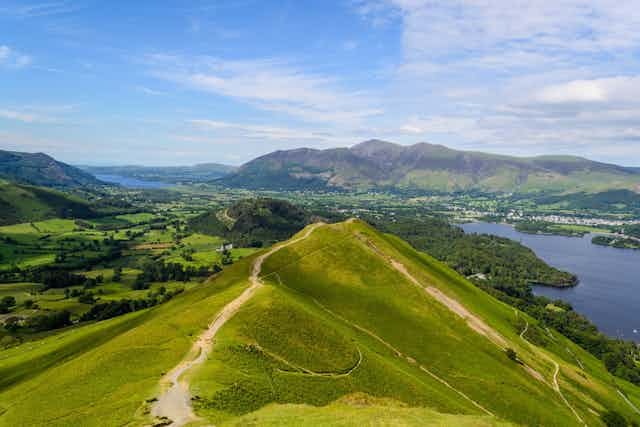A typical British countryside walk may conjure up images of vast green fields, heather-topped moorlands, and of course, countless stiles providing access throughout the right-of-way network. However, while stiles connect trails and public pathways, they are a physical barrier to accessible green spaces for all.
Over the last two decades, national parks across England have been removing stiles as part of a programme of measures to create more easy-to-navigate walking routes. Research by us and others shows how opening up natural spaces in such ways can particularly benefit young and disabled people. If such schemes were adopted more widely, the benefits could be spread even further.
Disabled people access natural and rural green spaces, including national parks, much less frequently than non-disabled people. And the physical barriers that stiles and other aspects of the landscape present are not the only issue. Rural green spaces can simply feel daunting for some people, often requiring skilful navigation, specialist equipment and confidence.
These things can also act as barriers for young people, who reportedly spend less time outside now than ever before. Many children and young people in the UK, particularly those with special educational needs or disabilities, do not regularly access natural, wilder green spaces for play and recreation, despite the broad-ranging benefits doing so can offer.
As a result, schools are often tasked with introducing young people to these spaces through outdoor and adventure education. This can be beneficial, but the short-term nature of these programmes leads to short-term gains, such as improved social skills.
That said, our latest independent evaluation reports of Nottinghamshire YMCA’s access to nature programme with marginalised and vulnerable young people show it can improve confidence, increase connection to nature and improve environmental awareness. It can also enhance physical, social and mental health.
While outdoor and adventure education programmes offer a glimpse into available opportunities such as climbing or kayaking, regular involvement in these activities is difficult for many families.
More regular access to green spaces for young people can benefit them over the longer term by enabling more creative play, opportunity to experience risk and direct hands-on interaction with nature.
Removing barriers
Improving accessibility could be one step towards young people spending more time outside in natural landscapes, like those found in the UK’s 15 national parks. Launched by the Lake District National Park nearly two decades ago, the Miles Without Stiles initiative improves the accessibility of many public footpaths and trails.
Adopted now by National Parks England, this scheme involves the removal of stiles, resurfacing of pathways, and a clear grading system which rates routes depending on their gradient and surface conditions. Improving accessibility also involves more consistent signposting and waymarking, decent public transport links and carpark provision, plus availability of toilets, cafés and other facilities.
The Lake District National Park now boasts 51 Miles Without Stiles routes, the Peak District National Park has 20 and South Downs National Park has seven.
Miles Without Stiles is endorsed by charities like the Disabled Ramblers who advocate for a more accessible countryside. And 21% of visitors to the Lake District National Park choose routes because of their accessibility, according to a 2019 Lake District National Park Authority report.
Many of these routes offer a gentler introduction to wild spaces, which may make young people feel more confident in accessing these places easily, either independently or with family members. No specialist equipment is required beyond a sturdy pair of shoes, wheelchair or buggy, and more people can go at their own pace.
Connecting with nature
When we interviewed a group of secondary school teachers for our research in 2020, it was clear that inclusive physical education provision involves differentiating lessons for mixed abilities and offering activities that could be modified accordingly. That relates to nature access too, and is especially relevant for young people with special educational needs and disabilities who experience a range of barriers to regular physical activity.
In the case of Miles Without Stiles, well-surfaced and clearly signposted routes are clearly graded as suitable for all, for many or for some, depending on their gradient.
We believe that schools, sport, and other physical activity providers could learn much from Miles Without Stiles about accessibility. Given the notable benefits of physical activity and of spending time outdoors, if National Parks England were to extend the Miles Without Stiles programme across the country, it would provide more accessible options for more people.
Promoting Miles Without Stiles to local authorities and schools could increase awareness of the initiative, and encourage young people and their families to spend more time being active outdoors. Beyond the countryside, local authorities could even use the Miles Without Stiles model to make urban green spaces more accessible, promoting more active lifestyles for all.

Don’t have time to read about climate change as much as you’d like?
Get a weekly roundup in your inbox instead. Every Wednesday, The Conversation’s environment editor writes Imagine, a short email that goes a little deeper into just one climate issue. Join the 30,000+ readers who’ve subscribed so far.

